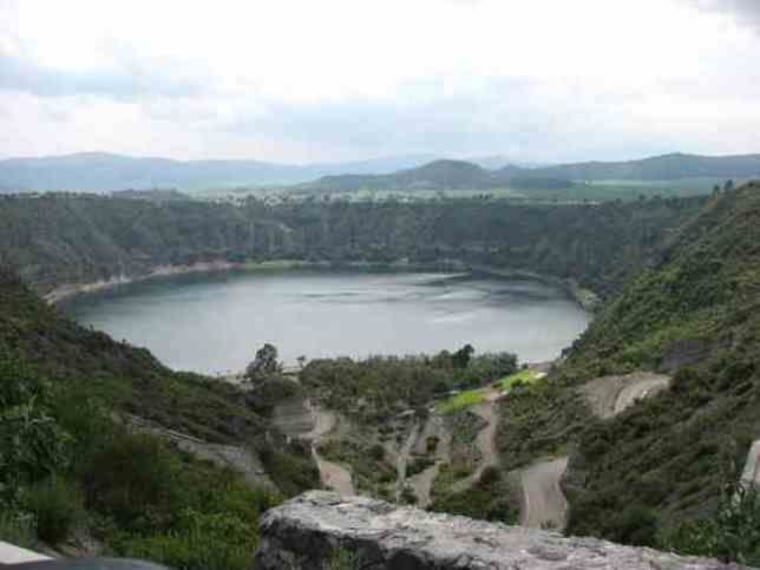A once-thriving Mesoamerican metropolis dried up about 1,000 years ago when below-average rainfall triggered centuries-long droughts that prompted people to abandon the city for greener opportunities, a new study finds.
Scientists have long debated whether it was drought or cultural forces that led to the abandonment of Cantona, a once-fortified city located just east of modern-day Mexico City. Few details were known about its past climate, which prompted researchers to take a closer look at the weather conditions that affected the pre-Columbian city.
In its heyday, about 90,000 people lived in Cantona, which is located in a dry volcanic basin. The area provided vast amounts of valuable obsidian, volcanic glass used for trade and making sharp tools. But people deserted the city between the year 900 and 1050, research shows.
To investigate why, geographers assessed the climate before and after Cantona's collapse. They took sediment cores and samples from Aljojuca, a lake about 20 miles (32 kilometers) from the city. [History's 10 Most Overlooked Mysteries]

Researchers examined the relationship between different oxygen isotopes in the samples, and determined how much precipitation and evaporation was taking place at the lake. The variation in the isotopes indicated that the area had drier summers, the scientists said. Analyses of other compounds in the sediment samples yielded similar results.
Cantona's regular monsoon season was disturbed by frequent long-term droughts, which would have harmed the area's crops and water supply, the researchers said. Moreover, the droughts lasted hundreds of years.
A 650-year period of frequent droughts plagued the area from about 500 to 1150, they found. This dry period was part of a period of droughts in Mexico's highlands that lasted from about 200 B.C. until the year 1300, just before the Aztec empire took power.
"The decline of Cantona occurred during this dry interval, and we conclude that climate change probably played a role, at least toward the end of the city's existence," lead researcher Tripti Bhattacharya, a graduate student of geography at the University of California, Berkeley, said in a statement.
During the early part of the dry period, Cantona's population actually grew. It's possible that political turmoil and droughts elsewhere initially drove more people to the fortified city, but then conditions got so bad that the city's inhabitants fled, Bhattacharya said.
The study was published online Jan. 26 in the Proceedings of the National Academy of Sciences.
— Laura Geggel, LiveScience
This is a condensed version of a report from LiveScience. Read the full report. Follow Laura Geggel on Twitter. Follow LiveScience on Twitter, Facebook and Google+.